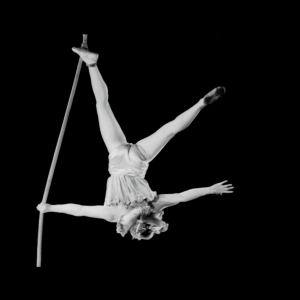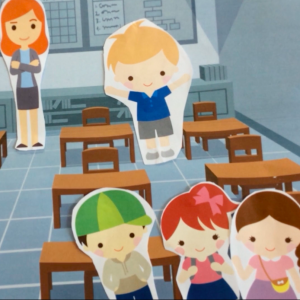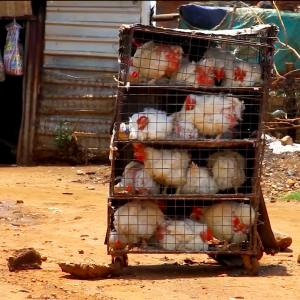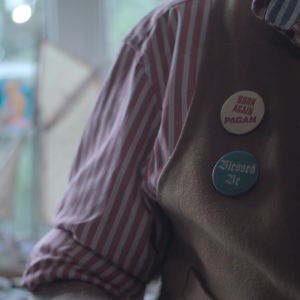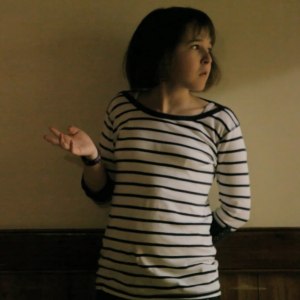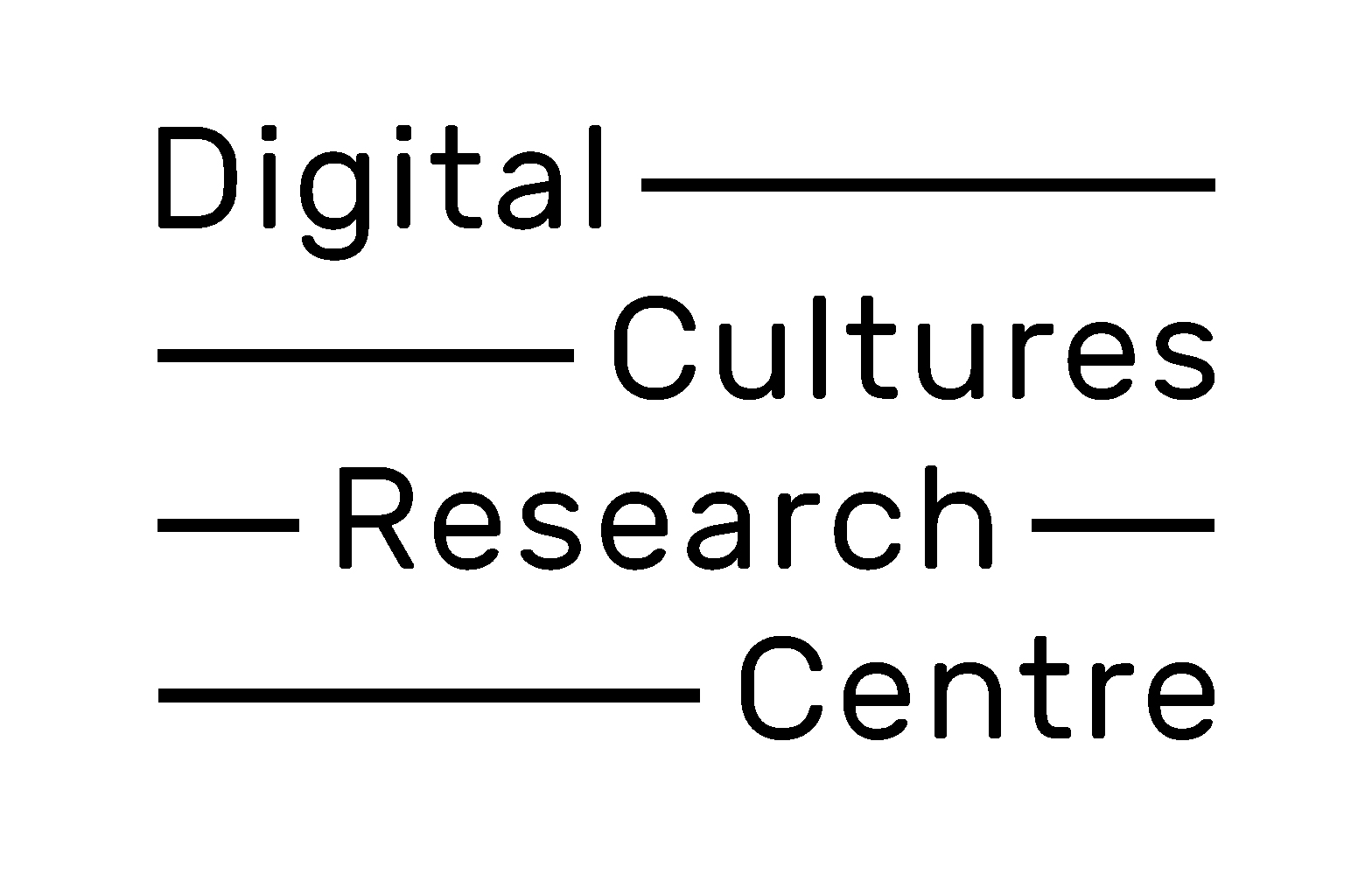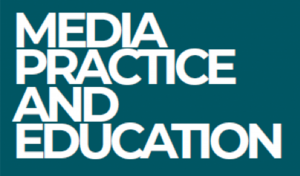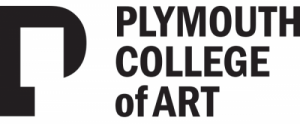Volume 10.2: Practice Pedagogies
ISSN 2514-3123
https://doi.org/10.37186/swrks/10.2
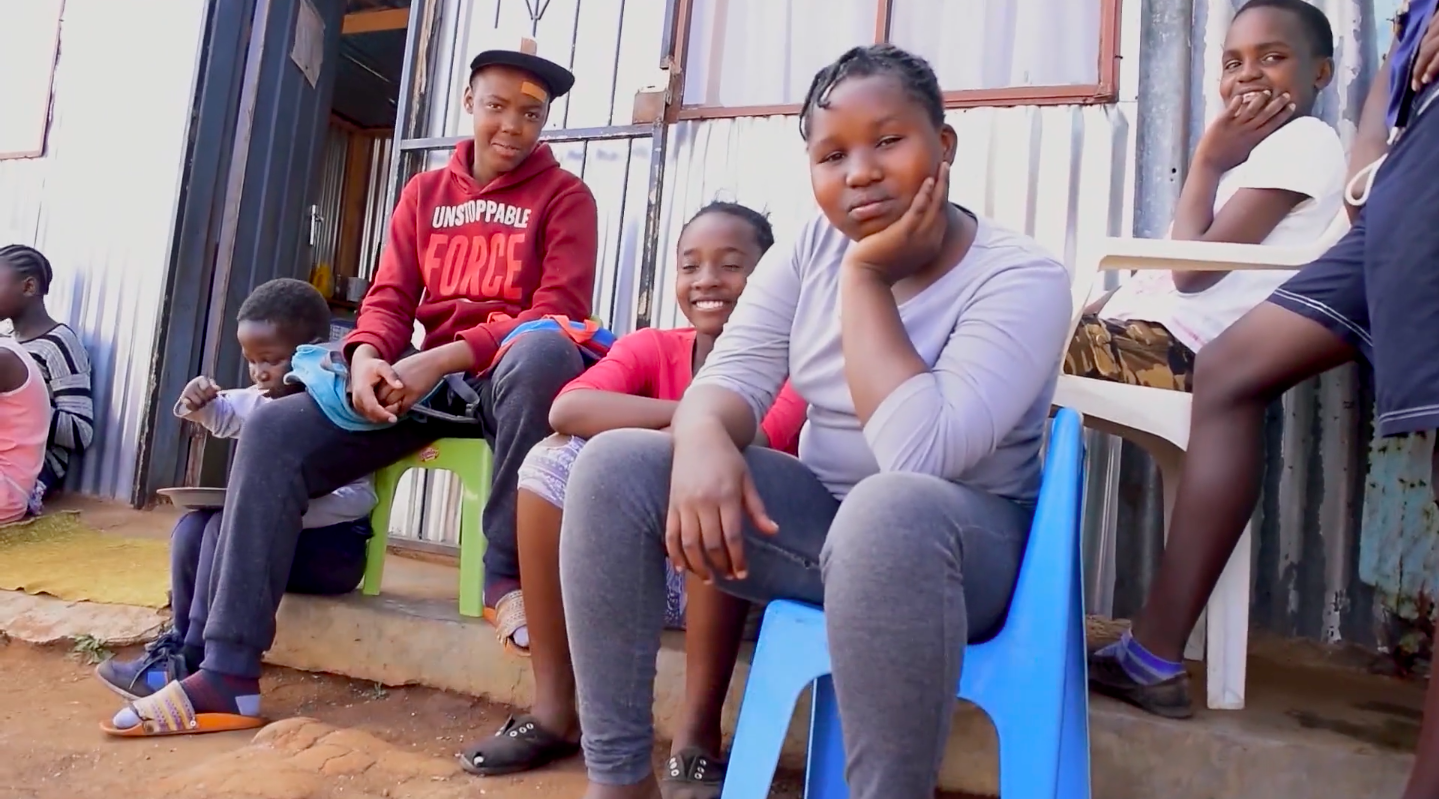
Image: Cooke (2018) The Born-Free Generation: Phendulani’s Story and Me
Volume 10.2: Practice Pedagogies Special Issue
Editorial
We are pleased to publish five new practice-research works for this special issue of Screenworks focused on Practice Pedagogy, edited by Lucy Leake, Plymouth College of Art. This volume is a joint issue with Media Practice and Education, the online peer-reviewed journal of media practice and education research, published by Taylor and Francis and edited in the Centre for Excellence in Media Practice at Bournemouth University.
Pedagogy as a term has often been considered synonymous with the act of teaching – teaching styles, teaching methods, schemes of work and learning outcomes, but it is much more than this. Alexander explains “…teaching is an act while pedagogy is both act and discourse” (Hall et al, 2008: 3). This definition of pedagogy allows praxis, the dialectical relationship between theory and practice, to become central to learning. Pedagogy essentially becomes a discourse. It is about working alongside students and/or colleagues in a way that allows lived experience to be at the heart of learning. Pedagogy is used here to describe an educational ethos that encourages co-created practice, learning through play, and learning from each other. It brings learning to life.
Our global call for practice asked for projects which responded to one or more key themes around practice pedagogy. These included:
– Pedagogy in Practice, and Pedagogy as Practice
– Pedagogy as risk-taking and experimental practice
– Action research and learning with your learners
– New ways of knowing: Learning in the margins
– Learning through doing
– Practice-research led teaching and Pedagogy feeding into research
Practice Pedagogy champions experiential learning, where practice is central. Teaching a subject specialism is just one aspect of this pedagogy, and the practice of that specialism, the practical tests, experiments and action research, the ‘learning by doing’, and the discourses arising from this, become key. This kind of pedagogy may “change the tutor’s role to be a ‘facilitator of learning’…[but the role of the tutor] is not diminished as a facilitator but remains powerfully educative” (Orr and Shreeve 2019: 74). Practice pedagogy is grounded in collaborative enquiry, which can lead to individual confidence-building, creative risk-taking, and experimentation. A co-constructed curriculum can become an achievable reality for both student and teacher. “True co-construction of curriculum is a very sticky place to be for all participants but can be transformative. In this kind of co-construction the students make decisions about what and how subjects are studied as well as being active participants in learning” (Orr and Shreeve 2019: 74).
What comes through all the practice research projects in this special edition is that practice pedagogy is a reflective practice. It is participatory and discursive, and allows students and teachers to learn from the experience. Without exception, the projects in this edition have set up a dialogue of exchange and collaboration amongst tutors, students, subjects and peers. The discourses entered into here support the theoretical assertion that knowledge is not found but constructed, and, particularly in these projects, is co-constructed in and through practice and discourse. As the collaborators in these projects took on the role of participants, co-constructors of knowledge, and co-learners, they created a space for real critical thinking, self-reflection and self-actualisation. Not only that, but there is a sense of real engagement coming through these projects. As Gauntlett observes “people are generally happier, more engaged with the world and more likely to develop and learn, when they are doing and making things for themselves, rather than having things done and made for them” (Gauntlet 2018: 227).
We are delighted to introduce our first entry, Playing With String by Rachael Jones and Charlie Fripp. This practice research project emerged as an experimental film, in response to a 60 second film challenge on the theme of ‘string’. The lecturer-practitioners took two days to make the film, and in their research statement, discuss the ways this has positively impacted their own teaching, and their understanding of the importance of learning through play. Their students, perhaps for the first time, could identify with their lecturers as actual filmmakers, and witnessed the strength of intuitive practice in play. Jones and Fripp question whether practice through play should be more formally recognised as integral to the curriculum, rather than existing in the margins, as it offers students the opportunity to develop reflective practice, and for lecturers and students to learn alongside each other.
Adrian Hickey’s contribution Generation Animation used participatory action research to empower school children, facilitated by undergraduates and tutors, to co-create animations based on their own chosen articles from the UNICEF Rights of the Child convention. Giving children ownership of subject matter, character development and story, empowered their creativity, and offered an interesting insight into how the children made sense of their feelings about belonging, justice and friendship. The animations themselves offer a unique appreciation of how these children might understand their place in the world, and give an understanding of how they handle social relationships, and of their self-regulating behaviours. There has long been recognition that identity and practice are profoundly connected – Hickey’s project reinforces the idea that practice can allow us to know how and what it is to be a human being. Generation Animation encouraged a community of practice to help the children to negotiate their own identities, and offered genuine insight to tutors and parents.
The third contribution in this volume, The Born Free Generation, Phendulani’s Story and Me, sees the director Paul Cooke explore an arts-based development project that took place in South Afrika around ‘Safe Parks’ in Johannesburg. Cooke’s research statement analyses the film’s co-creation with its collaborator and subject, the young filmmaker Phendulani, and in so doing, deconstructs the relationship between filmmaker and subject. The film makes the process of participatory filmmaking explicit, drawing on self-reflexive practice and foregrounds the on-going ethical dilemmas that arise from this kind of collaborative project. In this artist-researcher-teacher role, Cooke has developed a number of participatory filmmaking projects, that use filmmaking as a powerful tool for social action.
Following on from this theme of the relationship between filmmaker and subject, Seeking Jo: A Spirit in Place is a documentary project that saw Tilly Craig and Russell Cleave completely re-examine their own filmmaking practice, and how documentary filmmaking might be taught as an organic, participatory and reflexive practice. Commissioned to make a piece about renowned pagan Jo O’Cleirigh, and his friendship with British painter Ithell Colquhoun, the filmmakers soon realised that they would best serve their subject by allowing him to lead the discussion in his own way, through reflection on his past and a meander through his memories, drawing the viewer gently into his reverie, with minimal camera movement and artificiality of set. Allowing him agency in his own storytelling, shooting in his own environments, and avoiding any studio shoots, drew the filmmakers away from their usual methods, and gave their subject a sense of assurance, empowering him to speak freely about his life, and therefore allowing the filmmakers to capture a sense of authenticity that may have otherwise been missed.
Our final contribution in this volume, Ethics for Making is from filmmaker Pratap Rughani who has used his own film Justine (2013) as a case study for undergraduate and postgraduate students to examine questions around the ethics of making in creative practice. Using Justine as a starting point, Rughani has created and shared a website that can be used as a critical tool to examine the relationship between filmmaker and subject. In this case, he has focused on key areas of discourse around consent, particularly informed consent, responsibility, creative freedom, collaboration, and representation. These themes are presented as a series of questions and discussions that develop opportunities for real critical thinking for film, media and art students. The website is interactive and invites visitors to apply the methods of questioning presented here to their own creative thinking and arts practices.
Practice pedagogy is at the heart of creative education, and there are some incredible projects taking place in Screen Media Practice Research and Education. Thank you to everyone who submitted projects and papers for consideration for this Screenworks and MPE joint publication.
Lucy Leake, Plymouth College of Art
References
Gauntlett, D. (2018) Making is Connecting: The Social Power of Creativity, from craft and knitting to digital everything Cambridge: Polity Press
Hall, K., Murphy, P., and Soler, J. (eds) (2008) Pedagogy and Practice: Culture and Identities London: Sage
Naughton, C., Biesta, G., and Cole, D.R. (eds) (2018) Art, Artists and Pedagogy London: Routledge
Orr, S., and Shreeve, A. (2018) Art and Design Pedagogy in Higher Education London: Routledge
Rughani, P (2013) Justine https://vimeo.com/99227331
Thornton, A. (2013) Artist, Researcher, Teacher Bristol: Intellect
Contents
Author: Rachael Jones & Charlie Fripp
Format: Digital Video
Duration: 1’ 00”
Published: February 2020
Playing with String: Unexpected Insights into Practice Pedagogy is a project that arose after filmmakers Rachael Jones and Charlie Fripp decided to take up the challenge of making a 60 second film responding to the theme ‘string’. The resulting film, champions the importance of ‘play’ in learning, and the place of ‘play’ in the academic teaching of filmmaking practice.
Author: Adrian Hickey
Format: Digital Video
Duration: various
Published: February 2020
Generation Animation: Making Animated Films to Explore the UNICEF Rights of the Child saw a collaboration of lecturers, teachers and undergraduate students facilitate primary school children to develop animated films based around the Articles in the UNICEF convention on the Rights of the Child. The project highlights how co-constructed projects can create sites of discourse in the classroom.
Read more…
Author: Paul Cooke
Format: Digital Video
Duration: 20′ 17″
Published: February 2020
The Born-Free Generation: Phendulani’s Story and Me explores the relationship between subject and filmmaker, and who has the agency to tell someone’s story. Reflecting on his experience as a filmmaker and a lecturer, Paul Cooke draws attention to important ethical questions about responsibility and ownership in the participatory filmmaking process.
Author: Tilly Craig and Russell Cleave
Format: Digital Video
Duration: 23’12”
Published: February 2020
A Spirit in Place: Jo O’Cleirigh and Lamorna Valley explores an organic mode of filmmaking, which Craig and Cleave adopted in order to try to capture a sense of authenticity in, and with, their subject. This reflexive mode allowed for quiet reflection on their subject’s story, a gentler rhythm to be established, and demanded a rethink of their exisitng documentary filmmaking practice.
Author: Pratap Rughani
Format: Website
Duration: n/a
Published: February 2020
Ethics for Making is a multi format submission which includes the short film Justine (2013 Rughani) and the Beta launch of Ethics for Making: a space for students to explore ethics in creative arts practice. The space is hosted online and offers a practical, interactive tool for students and arts practitioners to explore questions around ethics, responsibility, consent, creative freedom and collaborative practice.
Volume 21.1 of MPE includes the following articles:
Student and Teacher Perceptions of the Differences between “Academic” and “Vocational” Post-16 Media Courses by Steve Connolly
Intensive Mode Screen Production: an Australian Case Study in Designing University Learning and Teaching to Mirror ‘real-world’ Creative Production Processes by Tom Murray, Iqbal Barkat & Karen Pearlman
Reanimating ‘Shelley’s Heart’: Breathing New Life into Locative Learning with Dual Process Design by Brad Gyori
VR Kaleidoscope: Reconfiguring Space and Place through Community-Based Media Literacy Interventions by Danai Mikelli and Steve Dawkins
Using GMG’s News Game as a Pedagogical Tool: Exploring Journalism Students’ Framing Practices by Jesse Owen Hearns-Branaman
Media Practice and Education adopts an inter-disciplinary approach and seeks to foster collaboration and exchanges between academic, professional, educational and creative practitioners, including the dissemination of work funded by such partnerships. In addition, the journal aims to contribute to the development of both integrated and diverse forms of research mediation, facilitate equitable relationships between media practice, theory and education and provide a critical bridge between the written article and the publishing of media practice and education research in other online media formats.
This volume is supported by the Moving Image Research Group and the Digital Cultures Research Centre at the University of the West of England, UWE Bristol in partnership with the journal of Media Practice and Education.
